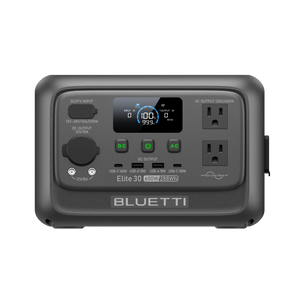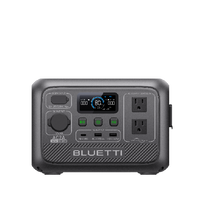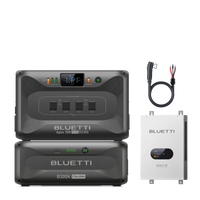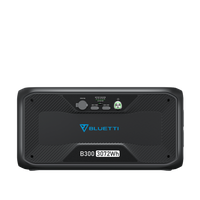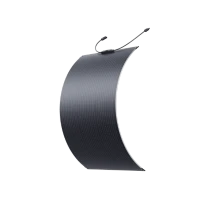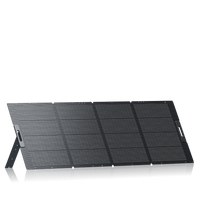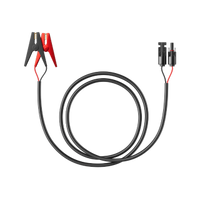Your cart is empty
Shop our productsGreen energy is a buzzword that has been discussed frequently in recent times, and it is understandable why! With the rising worries about climate change and the destruction caused by non-renewable energy sources to the environment, people are looking for alternative sources of energy.
It is high time that we all become familiar with and understand the importance of green energy. This guide gives you extensive knowledge of green energy, its significance, and the options you can choose.
Green Energy 101
First, let's explain the commonly asked question, 'what is green energy.' Simply put, green energy is energy produced from renewable sources and has a minimal environmental impact. This is in contrast to traditional energy sources such as fossil fuels such as coal, gas, and oil, which emit harmful greenhouse gases into the atmosphere and significantly contribute to climate change.
Types of Green Energy
Now, let's talk about the different types of green energy. There are many energy sources that come under the umbrella of renewable and ecologically friendly. These include solar, wind, hydro, bioenergy, and geothermal energy.
Solar Energy
Solar energy is one of the most popular types of green energy. It involves harnessing the power of the sun to generate electricity. This is done through solar panels, which convert sunlight into electricity. Solar energy is clean, renewable, and widely available, making it an attractive option for many people.
Wind Energy
Wind energy is another popular yet clean and renewable form of green energy. It involves harnessing the power of the wind to generate electricity. This is done through wind turbines, which convert the wind's kinetic energy into electrical energy.
Hydro Energy
Hydro energy involves harnessing the power of moving water to generate electricity. This is done through hydroelectric power plants, which convert the kinetic energy of moving water into electrical energy. Hydro energy is a reliable source of green energy and can be found in many parts of the world.
Bioenergy
Bioenergy involves using organic matter, for instance, crops, wood, or waste, to generate energy. This organic matter is burned to release heat, which can be used to generate electricity or power heating systems. Bioenergy is a form of renewable energy that can help reduce the amount of waste that ends up in landfills.
Geothermal Energy
Finally, geothermal energy involves harnessing the heat from the earth to generate electricity. This is done through geothermal power plants, which tap into the heat stored in the earth's crust to produce electricity. Geothermal energy is also a clean and renewable source of green energy that can be found in different parts of the world.
Understanding Green Energy
Many of us are familiar with the advantages linked to embracing green energy: Yet some of us remain undecided about making the transition because we are not completely sure of what kind of impact we can create by using these energy sources.
The good thing is that there are numerous grounds for optimism about green energy, even if we do not always understand how much impact we are creating. So, here is a quick overview on why this is so important and why we should all be participating in supporting it:
Environmental Benefits
Green energy enables you to reduce your impact on the environment. By using solar energy, for example, you are reducing the amount of electricity you use from the power company and decreasing pollution from coal-burning plants run by that company.
In 2021, approximately 32% of total CO2 emissions related to energy in the United States came from power plants in the electric power sector that burned fossil fuels or were fueled by fossil-based materials, as well as some geothermal power plants. Thus, if you are serious and want to help reduce your carbon footprint, investing in green energy is a great way to start.
Economic Benefits
Green energy is also economically beneficial. Investing in green energy creates jobs for people in many sectors—from construction and manufacturing to installation and utilities—in new, emerging industries that will continue to grow over time. Not only that, but it also provides more stable prices over time than traditional fuel sources like coal or oil.
In places with high retail electricity prices, investing in green energy can actually save a lot of money, and it is only expected to get cheaper over time. Moreover, because green energy is produced locally, it can help local businesses prosper by providing cheaper sources of power for their businesses to run on and creating a more resilient and self-sufficient energy infrastructure for the future.
The Renewable Energy and Jobs: Annual Review 2022 report found that solar energy was the sector with the fastest growth, providing 4.3 million jobs globally in 2021, which accounted for more than a third of the total workforce in the renewable energy industry.
The Basics of Green Energy
Even though much is clear to you regarding the importance of green energy, let's get familiar with a few fundamentals.
How to Switch to Green Energy?

So, how can you switch to green energy? The right way is to use solar panels or a wind turbine on your property. These options may seem pricey upfront, but they can save you money in the long run as you would not have to rely on non-renewable energy sources.
Now, let's talk about green energy sources specifically for homes.
Solar panels are a popular option for homes, as they are relatively easy to install and can provide a significant portion of your energy use. Wind turbines are another option, but they may not be practical for everyone as they require a lot of space.
For businesses, green energy options are a bit different. The popular yet better green energy source for businesses on a large scale is wind energy. Wind energy is a great way to reduce your energy costs while reducing your carbon footprint. If you are interested in wind energy, you will want to find a reputable company to install the system for you. Make sure you do your research and get a few quotes before making a decision.
Factors Influencing the Adoption of Green Energy
The adoption of green energy is a complex process that involves many factors. Below are some of the most important influencing factors.
Cost
The cost is the most important factor influencing green energy adoption. The cost of installing solar panels in your home is very high, but you can get a tax rebate. You will also save some money on your electricity bills every month. If you have enough capital, you should install solar panels at home as soon as possible to avoid paying high electricity bills every month.
Space
The space available for setting up solar panels is another important factor influencing the adoption of green energy. If you have ample space, you can easily set up solar panels at your home. However, if you have limited space, it will be difficult for you to install solar panels at your home.
Going Green: The Portable Alternatives

If you are limited by budget or space restrictions, don't worry! There are still ways to transition to green energy solutions. Portable solar panels and portable solar generators are small-scale alternatives to traditional solar panel systems. These devices are designed to be compact and easy to transport, making them perfect for those who do not have the roof space or ground space to install full-scale solar panels.
Portable solar panels can be set up in a matter of minutes and can be taken with you on the go, whether you are camping, tailgating, or just need a source of power for outdoor activities. Portable solar generators, on the other hand, are compact power stations that store energy from the sun and can be used to power lights, appliances, and other electrical devices.
Although these solutions are smaller in scale than traditional solar panel systems, they still help you to reduce your reliance on traditional power sources and embrace renewable energy. Whether you want to reduce your carbon footprint, save money on your energy bills, or live a more sustainable lifestyle, these portable options are a good place to start.
No matter what type of energy source you choose, it is important to plan and research before investing. Consider factors like cost, space requirements, and energy efficiency. And do not forget to educate yourself on local regulations and incentives that may be available for switching to green energy.
Role of Government in Promoting Green Energy
The government plays a vital role in promoting green energy. It can incentivize businesses to invest in green technologies and provide tax breaks and subsidies to those who adopt them. The government can also provide financial support for research and development of new green energy technologies.
What's more is that it can implement policies that encourage the use of green energy in homes, offices, and public spaces. Governments can also set targets for using renewable energy sources, which will help drive demand for green energy and innovation in this field.
The United States government is actively supporting the growth of renewable energy through various incentive programs. This includes providing low-interest loans on renewable energy products, subordinated loans, and grants for maintenance support. These initiatives aim to encourage the use of green energy and promote the development of new, innovative technologies in the sector.
Go Green
The growth of the green energy industry is not just for those with particular interests in green power and environmentalism. In fact, it is a sector that has the potential to positively impact a number of areas of our lives: from the way we power our vehicles to how we heat our homes and laptops. As such, green energy is something that belongs on everyone's radar—and it certainly makes sense for your next investment.
Check out Bluetti for portable solar products.
Shop products from this article
Be the First to Know
You May Also Like

Deadly Flooding Devastates U.S. South and Midwest — What You Need to Know

BLUETTI Teams Up with Leave No Trace to Power Sustainable Outdoor Adventures

